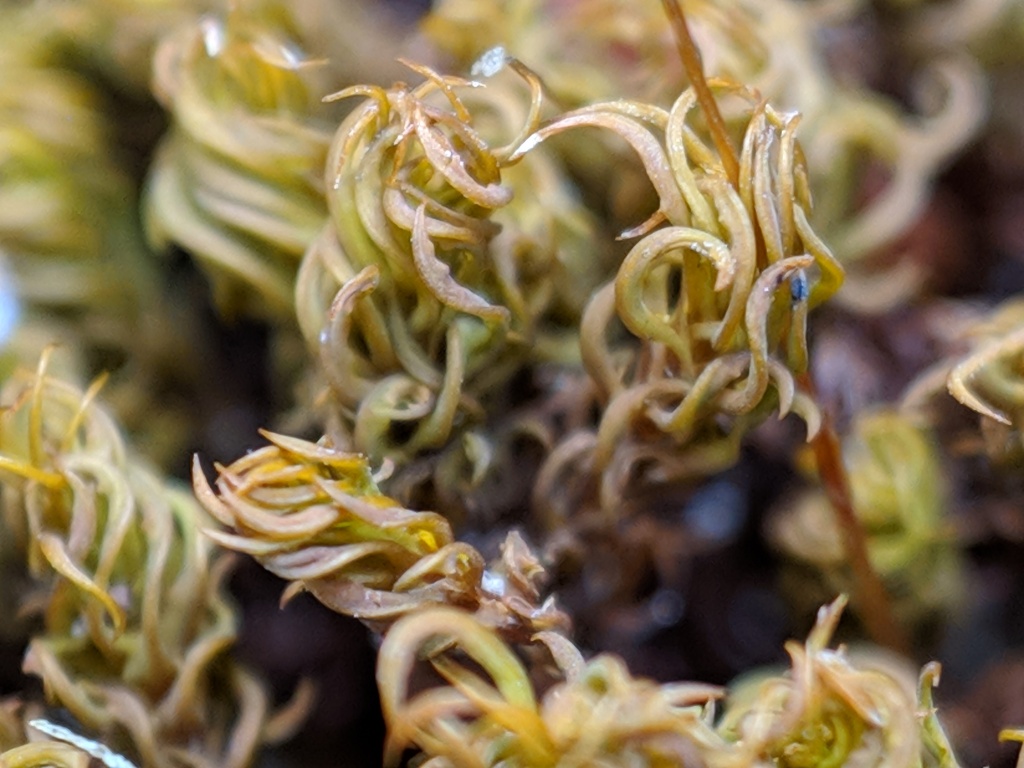Barbula calycina subsp. convoluta
Hedw.Tufts on soil or rocks. Stems 5–30 mm tall, simple or branched, taller plants densely tomentose. Leaves erecto-patent when moist, contorted, sometimes spirally, with incurved apices when dry, broadly oblong-lanceolate, 1.9–5 mm long, 0.5–0.9 mm wide, slightly concave to carinate; apex acuminate; costa excurrent as a mucro; margin entire, undulate, without a border; laminal cells in apical half ±isodiametric, 5–12.5 μm wide, pluripapillose; basal cells rectangular, hyaline, 45–120 μm long, 7.5–25 μm wide, smooth, in a clearly demarcated zone basal to the leaf shoulder and extending perpendicular to the margin toward the costa, becoming narrower, golden and papillose in several rows adjacent to costa and extending further toward apex, c. 1/5–1/4 of leaf length. Seta 10–35 mm long, light reddish brown, becoming yellow near capsule, twisted left. Capsule erect or inclined, narrowly elliptic or fusiform, straight or curved, 1.25–2.25 mm long. Peristome of 32 teeth, brown to salmon, spirally twisted. Operculum rostrate, 1.25–2 mm long.
Widespread throughout the state, but largely absent from high altitude and rainfall areas, in a variety of different dry habitats including open sclerophyll woodland, mallee, coastal vegetation and old dunes, edges of salt lakes, rocky gullies and roadsides. Also WA, SA, QLD, NSW, ACT, Tas and Lord Howe Island. New Zealand, Kermadec and Chatham Islands, and Chile.
 Spinning
Spinning